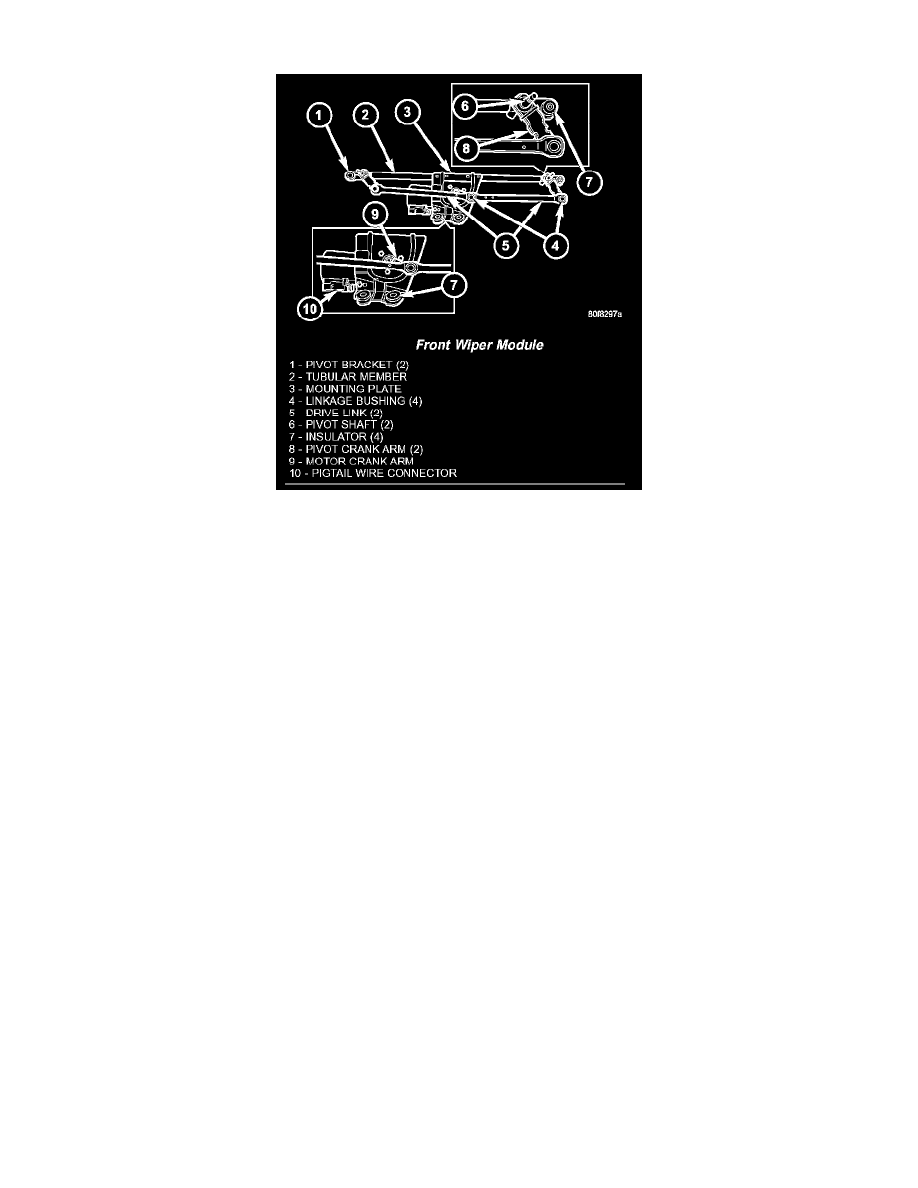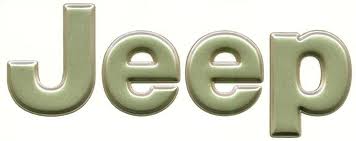Liberty 2WD L4-2.4L VIN 1 (2005)

Wiper Control Module: Description and Operation
Front Wiper Module
The front wiper module bracket is secured with two nuts below the wiper motor through rubber insulators to two weld studs on the bottom of the cowl
plenum panel beneath the cowl plenum cover/grille panel. Two screws secure the top of the module bracket to the cowl plenum panel through rubber
insulators located on the outboard end of each pivot bracket. The ends of the wiper pivot shafts that protrude through dedicated openings in the cowl
plenum cover/grille panel to drive the wiper arms and blades are the only visible components of the front wiper module. The front wiper module consists
of the following major components:
-
Bracket - The front wiper module bracket consists of a long tubular steel main member that has a die cast pivot bracket formation near each end
where the two wiper pivots are secured. A stamped steel mounting plate for the wiper motor is secured with welds near the center of the main
member. A short stamped steel tab that extends laterally from one side of the mounting plate provides a mounting location for the wiper motor
pigtail wire connector.
-
Crank Arm - The front wiper motor crank arm is a stamped steel unit with a slotted hole on the driven end that is secured to the wiper motor
output shaft with a nut, and has a ball stud secured to the drive end.
-
Linkage - Two stamped steel drive links connect the wiper motor crank arm to the wiper pivot lever arms The right side drive link has a plastic
socket-type bushing on each end. The left side drive link has a plastic socket-type bushing on one end, and a plastic sleeve-type bushing on the
other end. The socket-type bushing on one end of each drive link is snap-fit over the ball stud on the lever arm of its respective pivot. The left side
drive link sleeve-type bushing end is then fit over the motor crank arm ball stud, and the other socket-type bushing of the right side drive link is
snap-fit over the exposed end of the wiper motor crank arm ball stud.
-
Motor - The front wiper motor is secured with three screws to the motor mounting plate near the center of the wiper module bracket. The wiper
motor output shaft passes through a hole in the module bracket, where a nut secures the wiper motor crank arm to the motor output shaft.The
two-speed permanent magnet wiper motor features an integral transmission, an internal park switch, and an internal automatic resetting circuit
breaker.
-
Pivots - The two front wiper pivots are secured within the die cast pivot brackets on the outboard ends of the wiper module main member. The
lever arms that extend from the center of the pivot shafts each have a ball stud on their end. The upper end of each pivot shaft where the wiper
arms will be fastened each is tapered and serrated with a threaded stud formation at the tip. The lower ends of the pivot shafts are installed through
lubricated bushings in the pivot brackets and are secured with snap rings.
The front wiper module cannot be adjusted or repaired. If any component of the module is faulty or damaged, the entire front wiper module unit must be
replaced.
The front wiper module operation is controlled by the battery current inputs received by the wiper motor from the wiper on/off and wiper high/low
relays. The wiper motor speed is controlled by current flow to either the low speed or the high speed set of brushes. The park switch is a single pole,
single throw, momentary switch within the wiper motor that is mechanically actuated by the wiper motor transmission components. The park switch
alternately closes the wiper park switch sense circuit to ground or to battery current, depending upon the position of the wipers on the glass. This feature
allows the motor to complete its current wipe cycle after the wiper system has been turned Off, and to park the wiper blades in the lowest portion of the
wipe pattern. The automatic resetting circuit breaker protects the motor from overloads The wiper motor crank arm, the two wiper linkage members, and
the two wiper pivots mechanically convert the rotary output of the wiper motor to the back and forth wiping motion of the wiper arms and blades on the
glass.
